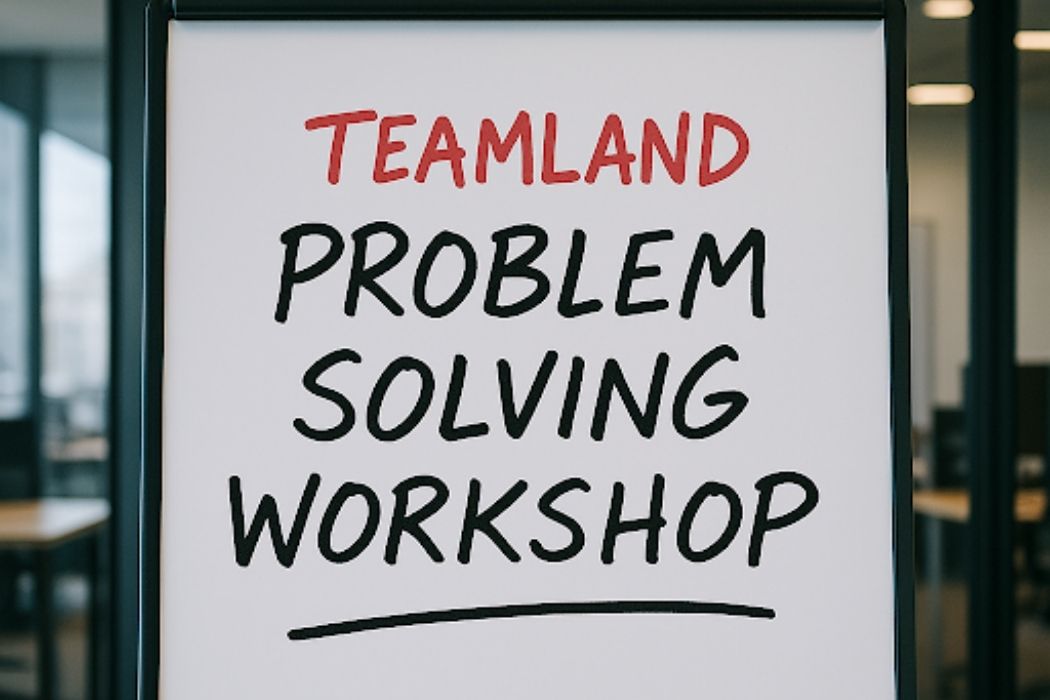What is Strategic Planning?

Strategic planning is the process of determining where you would like your organization to be, then why you want your organization there, and then how you will get to where you want your organization to be. It translates the long-term vision into short-term goals and concrete priorities and into day-to-day activities to ensure everyone is rowing in the same direction.
A good plan typically defines your purpose and position, explains the realities of your market and capabilities, makes verbal decisions on what you will and won't do, establishes measurable results to judge success against those decisions, and includes a handful of initiatives to move those results.
It also creates a cadence for reviews, metrics, and course corrections to plague the living daylights out of the plan (rather than sitting in some slide deck).
This is important because it makes people aligned, faster decision-making, and avoiding the "work hard but do no good" problem.
For instance, if your strategy is to move into the mid-market, the plan might identify a clear revenue target for the year, the signals that show you are on the right path to achieving that, the actions that will create those signals, like new pricing, a partner program, improved onboarding flow, auto-assigns, and review every week. In a nutshell, strategic planning is both direction and disciplined action.
Strategic Planning Process: A Practical Overview

It's a very easy-to-follow, step-by-step process for taking vision and turning it into action that unites your team into one and will show real progress. The following is marked by quick bullets, so put this head first!
- Clarify Purpose and Vision: Begin your strategic planning with a mission and vision statement that anchors all the decisions that are to follow.
- Diagnose the Landscape: In the strategic planning process, explore customers, competitors, trends, financial realities and internal capabilities to get a better understanding in the midst of change.
- Frame the Core Problems and Bets: The key next step for the subsequent cycle is to transform insights into a few key challenges and opportunities your business strategy needs to tackle.
- Choose Where to Play and How to Win: Make explicit choices on segments, products, and positioning; document trade-offs so focus beats busyness.
- Set Measurable Outcomes: Convert strategy into 3–5 results (OKRs, KPIs) you can track weekly with simple strategic planning tools and dashboards.
- Select the Few Initiatives that Matter: Prioritize cross-functional projects most likely to move those outcomes; write one-page briefs with scope, milestones, and risks.
- Allocate Resources with Intent: Fund the winners, pause low-value work, and align people, budget, and tech with the plan.
- Assign Clear Ownership and Governance: Name accountable owners, decision rights, and a light review cadence to keep momentum.
- Build the Operating Plan: Sequence quarterly and monthly milestones, dependencies, and communications in your chosen strategic planning tools.
- Upskill the Team: Use strategic planning training to teach goal setting, facilitation, and data literacy so execution improves each quarter.
- Tap Experts When Needed: Bring in strategic planning consultants to pressure-test assumptions, facilitate tough trade-offs, or accelerate alignment.
- Execute, Learn, and Refresh: Run weekly updates, remove blockers, and revise goals quarterly so your strategic planning stays alive and effective.
What Success Looks Like in a Remote-First Strategic Planning

Successful strategic planning is simple to spot. People know the priorities, can explain why they matter, and can see progress in a shared place. Meetings feel shorter and sharper, updates are easy to track and decisions actually stick.
The plan does not live on a deck. It lives in daily work.
Four Signals You Are On Track
- Common language across the team for goals, bets, and measures.
- Visible plan with owners, dates, and status that anyone can check.
- Short, focused sessions that lead to clear decisions and next steps.
- Regular review cadence that reinforces learning and course corrections.
Laying the Basis for Effective Remote Strategic Planning
1. Foundation
Start with the why. A brief reminder of the company vision and mission centers the room and reduces debate that goes in circles. Invite people to add how that vision shows up in their area. When people see their work in the story, strategy stops feeling abstract and starts feeling personal.
A Quick Script You Can Use
- Vision in one line: Where we are going and why it matters.
- Mission in one line: What we do for whom and how we win.
- Values in one line: How we choose to behave while we execute.
- Strategic theme: The focus area that gets most attention this cycle.
- Constraints: The limits that shape our choices this quarter.
Tips For Remote Rooms
- Put the one-line statements on the first slide and in chat.
- Ask each function to give one sentence on how they support the theme.
- Capture the lines in a shared doc so new teammates can find them later.
Choose a Goal Model and Keep it Consistent
You can use OKRs, the 4 Disciplines of Execution, a North Star Metric, or a simple “Objectives, Measures, Initiatives” grid. What matters most is consistency. The team should not relearn the model every quarter. Pick one. Teach it. Use it.
A Simple OKR Rhythm That Works
- Objective: An inspiring outcome written in plain language.
- Key Results: Three to five measurable results that prove progress.
- Initiatives: The projects that should move the numbers this cycle.
- Owners and checkpoints: Names, dates, and a light reporting cadence.
Practical Coaching Lines
- “If a key result does not change behavior, rewrite it.”
- “If an initiative has no owner, it is not real yet.”
- “If a result is not visible in strategic planning tools, it is not a result.”
2. Design
Time zones are a feature of remote work, not a bug. Pick core collaboration hours that overlap across regions. Use these hours for workshops and decisions. Protect them on calendars. Everything else can be asynchronous.
A Clean Quarterly Cadence
- Week 1: Vision recap, strategy themes, and company OKRs.
- Week 2: Functional OKRs and cross-team dependencies.
- Week 3: Initiative breakouts and resource checks.
- Week 4: Finalize owners and publish the plan.
Weekly Maintenance Rhythm
- Ten-minute leadership sync for risks and decisions.
- Thirty-minute team review for key results and blockers.
- Asynchronous updates in your project tool every Friday.
Keep Sessions Short and Structured
People focus better in shorter sessions. Turn a single four-hour marathon into four one-hour workshops. Each session gets one goal, one facilitator, one scribe, and one visible output. Give everyone the pre-read and the template the day before.
The Remote Strategy Workshop Blueprint
- Goal: What will be true at the end of the hour?
- Inputs: Links to data, research, and prior decisions.
- Activities: Timed blocks for brainstorm, cluster, vote, and decide.
- Outputs: A draft grid, a clear decision, or a list of next steps.
- Owners: Who writes, who reviews, and by when.
Time Blocks That Keep Energy High
- Five minutes to frame the question.
- Ten minutes for silent idea generation.
- Ten minutes to cluster and label.
- Ten minutes to vote and discuss.
- Ten minutes to pick a path and assign next steps.
- Five minutes to confirm the notes and the owner.
Invite Real Participation and Protect Quiet Voices
The loudest voice should not set the strategy. Use turn-taking, breakout rooms, and digital sticky notes to collect ideas from everyone. Invite written input before the call so people who think best in writing can contribute fully. Rotate who speaks first so seniority does not anchor the room.
Simple Facilitation Moves That Travel Well
- Ask for two ideas from each person before the group discussion.
- Use dot voting to surface strong options quickly.
- Call on people who have not spoken yet with a warm prompt.
- Park off topic ideas in a visible list and promise a follow-up.
Phrases That Keep Things Safe and Honest
- “I want to hear one view we have not considered yet.”
- “Let us separate opinions from data for a minute.”
- “What is the smallest experiment that would test this assumption?”
- “What would make this an easy yes for the group that must approve?”
3. Strategic Planning Tools
Use a small set that covers real-time conversation, asynchronous collaboration, strategic planning, and progress tracking. Teach the norms that go with each tool. When people know where to look and what to post, work feels lighter.
Core Categories That Most Teams Use
- Video and rooms: Live discussions, breakouts, and recordings.
- Whiteboards and canvases: Brainstorms, maps, and frameworks.
- Docs and wikis: Shared writing, decisions, and FAQs.
- Project and goal tracking: Owners, dates, and status.
- Async communication: Quick updates, questions, and decisions in writing.
- Dashboards: Metrics that prove the strategy is working.
Simple Usage Norms That Reduce Friction
- Put decisions in writing and link them to the plan.
- Tag owners when you assign or change work.
- Record key workshops so people in other time zones can watch.
4. Execution
Large goals feel safer when they are sliced into monthly and weekly outcomes. Publish these outcomes in your tracker so anyone can see movement. Celebrate progress that affects the key results. Ask for help when a slice gets stuck.
A Clear Slicing Pattern
- Quarter: Clear objective and three to five key results.
- Month: Key milestones that change the numbers.
- Week: Deliverables that unblock the milestones.
- Day: Focus blocks that facilitate the hardest work.
A Short Handoff Checklist
- What is the outcome in plain words?
- Who owns it and who needs to review it.
- What data or assets are required?
- When it is due and how progress will be measured.
Create Accountability Without Micromanagement
Remote teams thrive when leaders manage by outcomes, not by online status. Replace “are you there” checks with “what moved” check-ins. Ask for results in a shared place at a predictable time. Give support when people flag risks early.
Healthy Habits That Build Ownership
- Owners post brief weekly updates tied to key results.
- Teams meet to solve blockers, not to restate updates.
- Leaders praise outcomes in public and coach in private.
- Everyone knows how to escalate a risk and who can decide.
Signs of Micro-control to Avoid
- Surprise pings for status that live only in chat threads.
- Heavy tracking of hours rather than outputs.
- Rewriting someone’s plan without a conversation.
- Decisions that move back and forth without a visible record.
5. Culture
In an office, you overhear context in hallways. In a remote team, you must share it on purpose. Explain trade-offs, show customer stories, and repeat the why behind big goals. People do better work when they see the meaning in it.
Practical Ways To Keep Purpose Alive
- Kick off each cycle with a customer story that fits the theme.
- Share a monthly note that connects wins to the mission.
- Invite a cross-functional guest to talk about impact.
- Document the reasoning for major decisions so others can learn.
A Simple Update Format People Will Read
- One paragraph on the goal and the signal.
- Three bullets on what moved and why.
- One risk and one ask.
- A link to the plan and the dashboard.
Build Belonging So Hard Problems Become Easier To Solve
Trust fuels honest debates and better strategy. Remote culture needs shared rituals. Keep a few light, human touches so people feel seen. It can be a five-minute check-in at the start of meetings or a quick celebration on Fridays. Small moments add up.
Rituals That Scale Across Locations
- Rotating meeting host and timekeeper to spread voice and ownership.
- Quick gratitude round, so wins and help are visible.
- Optional social drop-ins that pair people for short chats.
- Quarterly virtual offsites that mix strategy with team building.
How Teamland Can Help You Run Remote Strategic Planning That Actually Sticks
Teamland isn’t just “fun events.” We design and facilitate working sessions that get alignment, decisions, and a clear plan, to then build the communication muscles to carry it forward.
1. Run The Strategy Room
- Strategic Planning Facilitation: Expert strategic planning consultants guide leadership through a structured process to align on priorities, surface trade-offs, and leave with actionable outcomes. Perfect for quarterly and annual planning, especially across time zones.
- Meeting & Workshop Facilitation: From executive offsites to large cross-functional workshops, Teamland manages flow, draws out quieter voices, and drives to decisions you can document and track. Teamland
- Leadership Alignment Workshop: Tightens vision, decision rights, and execution rhythm so the plan doesn’t die after the offsite.
- Team Alignment Facilitation: Turns a set of initiatives into shared ownership and execution plans your managers can actually run.
2. Make Virtual Strategy Sessions Engaging and Productive
- Corporate Training Catalog: Communication, collaboration, and corporate influence workshops that make remote sessions sharper and more inclusive (clear framing, concise messaging, better Q&A).
- Effective Communication & Collaboration Training: Practical skills for structuring messages, listening, and decision-making in distributed teams—key to frictionless planning cycles.
- Business Communication & Influence: Helps leaders craft executive-ready narratives for strategy rollouts and stakeholder buy-in.
3. Build Confident Presenters For Rollouts And Reviews
- Public Speaking with Confidence: Led by a two-time TEDx speaker; our public speaking training covers delivery, body language, storytelling, and using visuals, so quarterly reviews land clearly. Also available as an ongoing class for steady reps.
4. Host Virtual Or Hybrid Offsites Without The Chaos
- Remote Offsites and Retreats: Full-service planning and facilitation for virtual or hybrid strategy days, plus morale-boosting elements to keep energy high. Teamland’s guides outline why virtual offsites can lead to focused, interruption-free decisions.
- Team Offsite programs: Menu of offsite formats from department retreats to “Team Strategy Sessions” to match your timeline and depth.
5. Keep Momentum After The Plan
- High-Performance Team Training: Codifies shared purpose, accountability, and collaboration habits, so weekly reviews focus on outcomes, not status theater.
- Ongoing Learning Hub: Professional-development and communication resources to reinforce skills between planning cycles.
Pulling It Together: A Two Week Starter Plan
You can begin small and still make a difference. Use this plan to launch your next cycle without overhauling everything.
Week 1
- Publish one page with vision, mission, values, and the strategic theme.
- Agree on the goal model and share a template.
- Schedule four one hour workshops for next week with clear goals.
Week 2
- Run the sessions using the workshop blueprint.
- Draft objectives, key results, and the first set of initiatives.
- Assign owners, publish the plan, and set the weekly review rhythm.
Final thoughts
Remote strategy is not a magic trick. It is a set of small, steady habits that add up. Use clear templates. Run shorter sessions. Write decisions down. Track real results. Celebrate progress. Learn fast. When you do those things on purpose, your team will feel aligned, confident, and ready to move.
If you’re planning a larger initiative like a virtual offsite or multi-session training sprint flag that in your message, we’ll propose a right-sized plan with facilitation, tool setup, and post-session follow-through.
Let’s make your next planning cycle the one that sticks—book your Teamland demo today.
FAQs
What are the five stages of strategic planning?
Start by clarifying purpose and vision so everyone knows the destination. Diagnose the landscape, choose where to play and how to win, then set measurable outcomes and a few key initiatives tracked in simple strategic planning tools. Allocate resources, assign owners, and execute, learn, and refresh each quarter so the strategic planning process stays alive.
How can remote teams conduct effective strategic planning?
Publish a one-page plan with vision, goals, initiatives, owners, and review dates in a shared hub. Run short workshops for decisions, push writing and review to async, and keep a light cadence of weekly outcome updates. Add strategic planning training to strengthen facilitation, goal setting, and data literacy.
What are the best practices for virtual strategic planning sessions?
Give pre-reads early and design each session around one clear outcome. Facilitate a simple path—frame, collect ideas, narrow, decide—and record the decision and the why. Protect quieter voices with turn-taking and quick written inputs, then log next steps and dates in your strategic planning tools.
Which tools are most useful for remote strategic planning?
Think in categories: a whiteboard for brainstorming and prioritization, a docs or wiki space for the one-page strategy and decision log, a goal tracker for OKRs and KPIs, a project tracker for initiatives, and an async channel for updates. Keep the stack minimal and the norms clear; revisit annually with help from strategic planning consultants if needed.
How can leaders improve collaboration during remote strategic planning?
Lead with calm clarity, naming trade-offs and asking honest questions. Invite broad input, pre-wire big choices with stakeholders, and recognize outcomes publicly while coaching privately. If alignment stalls, bring in strategic planning consultants and top up skills with targeted strategic planning training.







